Avatar: Frontiers of Pandora
Developer: Massive Entertainment
Publisher: Ubisoft
Platforms: Xbox Series X (Reviewed), PC, PlayStation 5
Release Date: Available Now
Price: $69.99 USD – Available Here $109.95 AUD – Available Here
Overview
James Cameron’s Avatar managed to make the biggest possible splash back when it was released in 2009, becoming the top grossing film of all time. Most of this success came through the absolutely gorgeous and vibrant world of Pandora and giving movie-goers a familiar premise wrapped in such a pretty package. Despite having to wait thirteen years for a sequel film to be released, fans of video games shockingly only saw one game released back when the first film arrived and never since. Now, with promises of an open world making the best use of what Pandora has to offer, Ubisoft and Massive Entertainment have released Avatar: Frontiers of Pandora. Now that players have a chance to explore elements of Pandora never seen before as a Na’vi, does this game manage to tap into the franchise’s potential?
Story
Set partially prior to the events of the first film, players take on the role of a customizable Na’vi child who is being taught by the RDA as part of The Ambassador Program, or TAP, supposedly as a way to acclimate children to the ways of humanity to serve as a bridge between the Na’vi and the RDA, though nothing is ever as simple as it seems. Years pass and the events of Avatar happen, with Jake Sully and the rest of the Na’vi managing to drive the RDA from Pandora, resulting in the children in TAP being put into stasis for sixteen years. Upon being woken by their former human teachers, players find themselves immediately under attack as sixteen years have passed and the RDA has returned to Pandora and is looking to eliminate the Na’vi. As players escape from the RDA, they learn that a sizable human resistance has teamed up with the Na’vi forces to fight against the RDA and it is up to the player, as the only surviving member of the legendary Sarentu clan, to unite the clans in their rebellion and drive off the RDA once and for all.
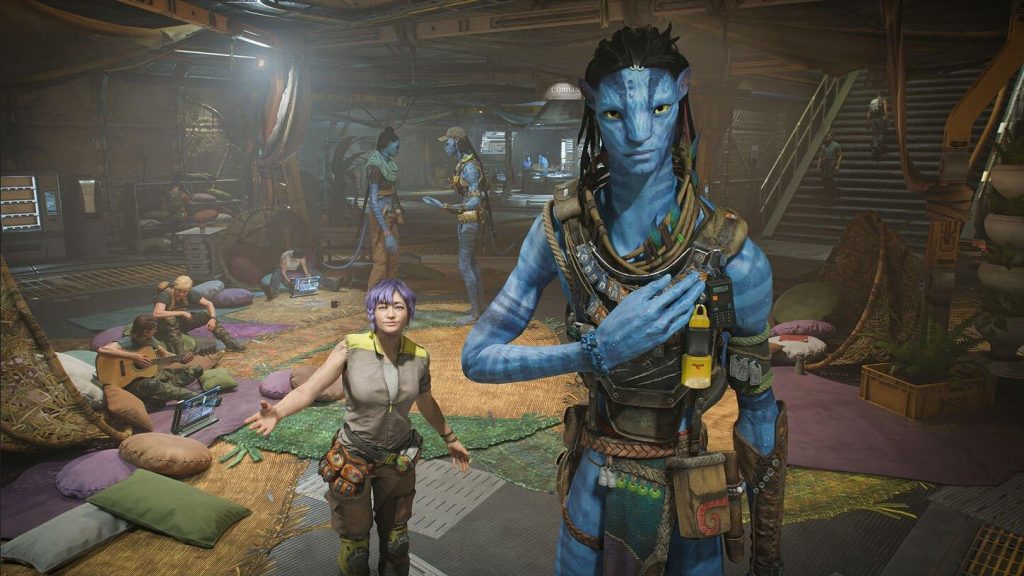
It is worth noting that while the events of the films are referenced and used as backdrop to what happens in Avatar: Frontiers of Pandora, the game itself takes place entirely separate from the events of the films. As such players will find themselves exploring entirely new areas, interacting with new characters, and learning far more about the world of Pandora and the Na’vi people than they ever did through the film’s limitations. That being said, don’t expect a complicated plot line here as the narrative is mostly predictable for anyone familiar with the series as a whole. The RDA, through any means necessary, is looking to obtain the resources that are abundant on Pandora even if it means wiping out the Na’vi people and players must put a stop to them. The real delightful element here comes from learning more about the Na’vi, especially the Sarentu tribe that players belong to as they uncover just how impressive their tribe was and how important it was to the Na’vi people.
In a few ways Avatar: Frontiers of Pandora’s open world nature does damper its storytelling a little while also allowing for plenty of background information and lore that can be uncovered through exploration. The open world nature means that many of the game’s side-quests, while interesting, lack any form of staying power and a majority of the characters that players meet throughout the game quickly fade away or only appear in a side-mission later on. This is a bit of an issue that remains true through the majority of the first half of the game before the plot starts to culminate in the second half, though even here the game’s primary antagonists are lackluster at best and stereotypically predictable at worst. As mentioned before, the real highlight throughout the game’s story is the lore that players will uncover while playing, both through collectables, exploration, and more, as any fan of the Avatar series will be delighted to learn more about the fascinating and vibrant world of Pandora and its native inhabitants while playing through the fairly sizable story even with its faults.
Gameplay
Avatar: Frontiers of Pandora features first person exploration and combat but, similar to its story, the exploration aspect of traveling through the world of Pandora is the main highlight here. Players will start in the Kinglor Forest and eventually progress to two other unique zones called the Upper Planes and The Clouded Forest as they progress through the story. Each area in the game features its own unique aesthetic and designs, all feeling like they match what fans know of Pandora perfectly. The game also opens up quite quickly, giving players freedom to explore and see what the world has to offer fairly fast.
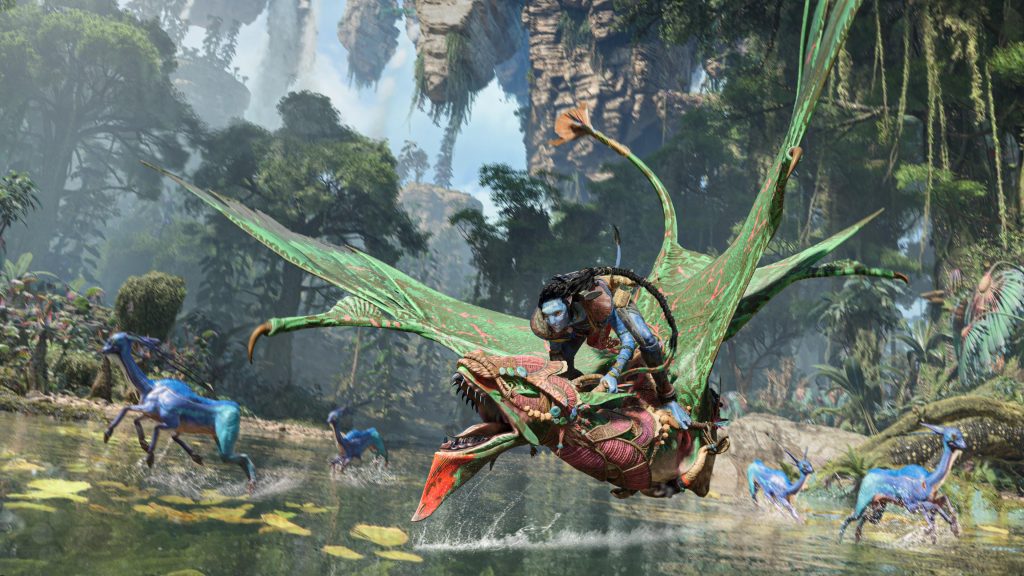
This includes the ability to tame the familiar Pa’li horse-like creatures and, in one of the best sequences in the game that manages to combine both its puzzle platforming aspects and sheer gorgeous design, tracking and taming an Ikran for flying through the skies. Rarely does exploring a world feel like the best part of an open-world game but thanks to the sheer level of design and unique elements on offer on Pandora players will constantly be in wonder of what they are seeing as they navigate the world, especially with how striking the very first location ends up being. Collectables are also handled well, with there being a variety of simpler lore collectables as well as those that provide various worthwhile boosts. These include Tarsyu Saplings that provide skill points that unlock a wide range of upgrades along five different skill trees with different benefits for the player and Bellsprigs that permanently boost their health.
Even some of the game’s looting and gathering mechanics feel rooted in the Na’vi’s respect for nature. Players will find themselves harvesting plants for cooking and crafting with players needing to take part in a small mini-game to harvest a plant without damaging it forever, offering higher quality rewards for leaving no destruction behind. Along these same lines, hunting animals will offer higher quality meat, pelts, etc. if done mercifully or with a single shot. Using a bow to instantly kill an animal by targeting its weak point will reward some of the best components while unleashing on them with a machine gun will only provide some low quality meat and maybe some materials. This attention to detail is wonderful when it comes to making players feel like they are actually part of the world rather than simply tearing through it in search of upgrades.
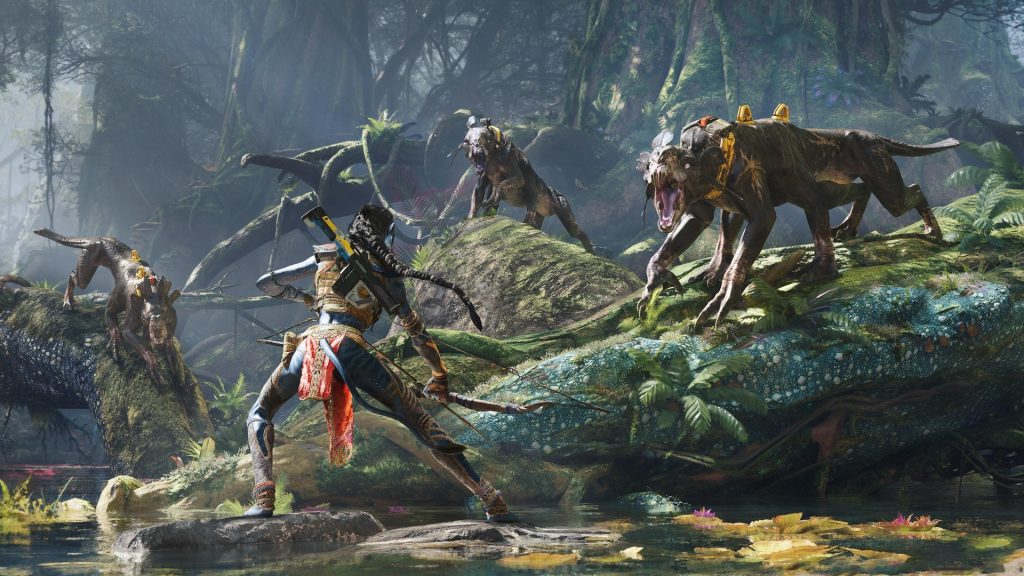
This level of authenticity carries over into the actual sight-line of the player as well. Since players are playing as a full grown Na’vi they stand easily ten feet tall, towering over any humans they encounter and finding themselves cramped when navigating human-designed locations. Along these same lines, players can nimbly move and leap from place to place, including using charge jumps, and easily using their powerful blows to take down enemies as needed. One element of the more “authentic” experience is the scaled back UI that feels like both a bit of a blessing and a little curse.
Rather than littering the world with quest markers, component locations, collectables, etc. players must make use of their “Na’vi Sense” to track down various objects that are useful or the direction of a quest. This works well as it allows players to enjoy the world without clutter but can make some navigation a little on the rougher side, especially since some locations are poorly marked even when using a waypoint to help with navigation. Na’vi Sense will also temporarily highlight harvestable items, wildlife that can be analyzed or hunted, crates, and even enemies making it something players will use incredibly often, to the point that it is easy to overuse the world-dimming sense that could have been avoided with at least a little bit more optional UI to work with.
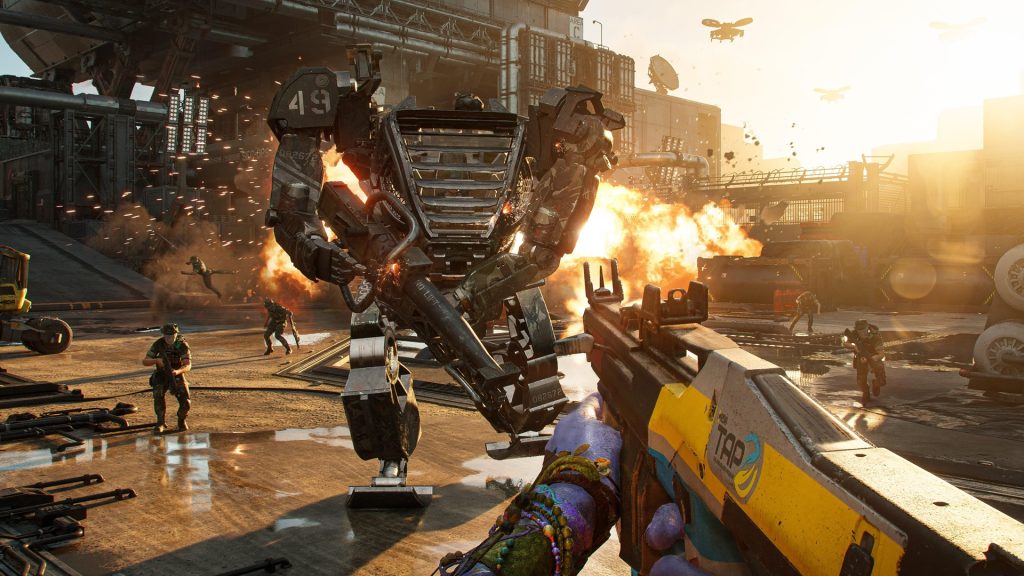
With combat being entirely first person, the first person shooting mechanics are handled decently though can feel a bit too generic at times. Using some of the Na’vi’s native weaponry such as the bow and sling make for stealthier more intense combat though players can also make use of their stealthier nature to try and sneak around and eliminate enemies that way as well. Alongside native weaponry players can also obtain RDA weapons such as assault rifles and shotguns though unlike the native Na’vi weaponry, ammo is a bit more scarce as it isn’t readily craftable even if it can deal plenty of extra damage against the RDA’s mechs.
Along these same lines, players can target the weak points of RDA equipment just like any animals they hunt, with a well placed arrow in a mech suit’s exhaust dealing out plenty of damage or shattering the protective cover over a vulnerable pilot. While enjoyable for the most part, the combat really doesn’t evolve too much throughout the game, and many of the open world activities and encounters will also feel quite familiar to the standard “bread and butter” encounters of Ubisoft’s other open world shooters. Taking down an RDA base may have some extra twists to it, like tracking down a specific part that must be destroyed or hacked before it can be fully completed, but this extra bit of variety is only a small inclusion compared to how standard most of these encounters play out.

As mentioned before, players will find that they will be doing plenty of crafting throughout Avatar: Frontiers of Pandora and part of that is to upgrade their equipment while the other is to acquire food and ingredients used to cook recipes that can provide long term buffs for the player. Making sure your equipment is up to snuff is incredibly important in the game as well, since rather than having levels or things similar to that, the game features a Combat Strength meter instead. This factors in the player’s weaponry, armor, and attachments and provides them with a number depending on how strong they are.
This wouldn’t be too much of an issue if the game didn’t allow these numbers to so heavily play into the combat, as taking on a foe even one level stronger than yourself is asking for trouble, let alone taking down an entire group of enemies. This means that sometimes players will feel like they are at the mercy of RNG to obtain stronger equipment simply to properly advance through the game, with some lucky drops making players incredibly powerful early or leaving them struggling to upgrade their gear simply to get by the next story mission. For example, an enemy barely a level higher than the player can dish out tons of extra damage while soaking up a lot more punishment only for a single attachment to be applied, bumping the player’s level up to match the enemy, and laying them out in a single shot. While this does make some sense to try and limit just how far players explore some of the more dangerous areas of Pandora, keeping them reigned in through Combat Strength, it can ruin the pacing of the game.
Audio & Visuals
Now multiple times we have mentioned that the best part of Avatar: Frontiers of Pandora is the world itself and a lot of that is thanks to how absolutely gorgeous the world of Pandora is in this game. The amount of lush foliage, vibrant colors, and unique designs that feel right at home with what fans are already familiar with makes exploring this world an absolute delight. Even when exploring human facilities there has been plenty of attention given to certain details, like how players will need to crouch or slide through locations that a human would fit through but a Na’vi cannot. The character designs are handled fairly well while the various wildlife that players will fight and hunt are also perfect matches for what one would expect to find on Pandora.
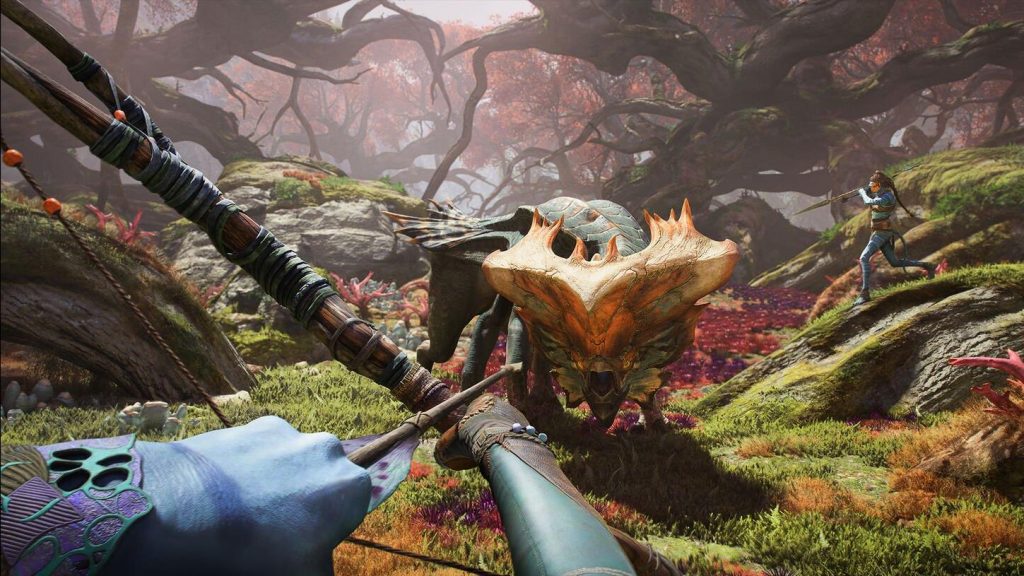
The voice work for the title is handled well enough, with there being plenty of Na’vi terms bantered about to make sure things feel authentic, though once again the antagonists have some of the weaker performances. The soundtrack features a great collection of background music that works exceptionally well during set-pieces and intense moments but also knows when to relax a bit and let players enjoy the ambiance of the jungle.
Overall
Avatar: Frontiers of Pandora has captured the magic of exploring the gorgeous and lush jungle planet of Pandora perfectly. Running around the world, climbing obstacles, hunting for resources or collectables, all of these activities thrive thanks to the gorgeous world design and graphical attention to detail. The storyline is fairly predictable and the combat is solid, albeit a bit on the blander side with some annoying RNG dependent gear gates at times, but those who want to explore everything Pandora has to offer will find that Avatar: Frontiers of Pandora delivers on this promise perfectly while surrounding a serviceable open world FPS
Capsule Computers review guidelines can be found here.

